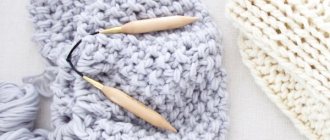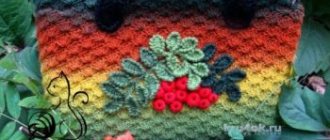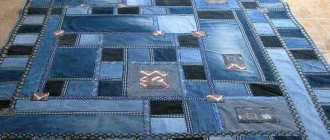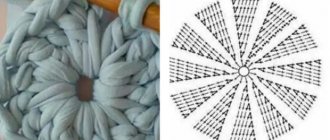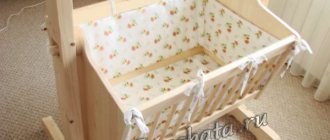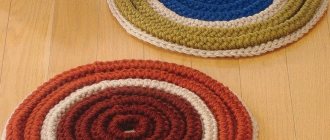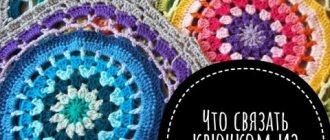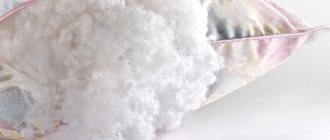A warm knitted blanket made from plush yarn will be a good gift for young parents. Made with your own hands, this gift will keep your baby warm in winter and securely wrapped in summer. In addition, the bedspread can decorate the room and fit harmoniously into any interior, from a children's room to a large living room.
This article will help you decide how to choose yarn and which tools are best to use for your first project: knitting needles or a crochet hook. In addition, methods of knitting blankets will be described for both beginners and experienced craftswomen.
Choosing yarn for a blanket
Plush is a type of velvet. It can be made from a variety of materials, including:
- cotton;
- silk;
- wool;
- linen;
- synthetics.
Also, plush is often a combination of synthetic and natural fibers.
For children, the best option is cotton. Compared to other materials, it has a number of advantages. The following can be mentioned as the main ones.
- Naturalness of the material. Cotton will not cause an allergic reaction or irritation on delicate baby skin.
- Soft texture. Unlike other materials, cotton textiles are very soft and do not rub the baby’s skin.
- Easy to care for. Cotton does not require complex care; normal washing rules are quite applicable to it. In addition, stains and other contaminants are easily removed from this material. This is especially true if it will be used by a small child.
Wool yarn is also often used. However, its choice must be taken more responsibly - it should be as soft as possible and in no case should it prick. Otherwise, the material may injure delicate baby skin. The wool must be 100% natural.
When you have decided on the material, you need to choose a textile brand. Among the trusted brands that offer high-quality products for purchase are the following.
- YARNART. Turkish manufacturer of yarn and other textile products. Mainly produces wool and cotton plush. Products of the middle price category - one skein of yarn will cost approximately 150 rubles.
- Alize. Another yarn manufacturer from Turkey. The company's product range includes a wide variety of textile types - from natural cotton to synthetics. Alize products are inexpensive - for one skein of yarn you will need to pay about 100 rubles.
- Vanity. Expensive yarn made in Italy. It is distinguished by the use of exclusively natural materials. It is 1.5 - 2 times more expensive compared to Turkish analogues - the price of one skein is in the range from 250 to 300 rubles.
- Kartopu. Inexpensive Turkish yarn. Quite high quality. Costs from 100 to 150 rubles.
Material and tools
Independently and correctly knitting a blanket with knitting needles requires the preparation of high-quality material and tools. Not every type of thread is suitable for covering. For example, do not use yarn with the addition of metallized thread.
The material is beautiful, but it irritates the skin and will not be comfortable to cover. The main types of threads used: acrylic, wool, wool blend, cotton, angora with acrylic, mohair, wool with the addition of acrylic, grass.
Interesting! Cotton is very light and pleasant to the touch, so it is often used for knitting. Cotton also does not require special care.
The softest fabrics are those made from “grass” threads. Products made of wool or wool mixture are often used in winter due to their good heat retention. It is not recommended to make large projects from old yarn, because its surface is frayed and the fabric will turn out sloppy.
The selection of knitting needles is also important. They can be made of wood, metal, plastic, even bone. To find good tools, look at the polish (should be of a good level) and the sharpness of the ends - the ends should not be too sharp so as not to get hurt. But dull ones won’t work either, you need to look for the middle.
For light yarn, use knitting needles made of plastic or bone. For heavy ones, wooden and metal ones are suitable. The tool number corresponds to its diameter. To select the optimal diameter, you need to multiply the thickness of the yarn by 2.
During work, other equipment may be useful:
| 1. Row counters | They record the numbers. |
| 2. Knitting pin | The loops stop for her. |
| 3. Small scissors | Needed for additional work, the tip must be sharp. |
Sometimes you also need a knitting thimble, colored tips, bobbins, an iron, a notepad, a pencil, an eraser and a ruler.
Crochet a blanket
For most types of knitting, a hook with a length of 12 to 16 centimeters is suitable. Tools can be made of steel or plastic. It is better to choose a metal product - it will last much longer. The presence of a handle is important - it promotes better retention (as a result, the quality of work improves).
Here are some tips for beginners.
- The hook is perhaps one of the most important components of the work. Therefore, you should not save on it under any circumstances. It is better to spend on an expensive instrument and enjoy creativity and its results, than to have difficulties with a cheap and low-quality one.
- If you make a mistake, it is better to undo everything that was tied after it and tie the wrong section again. Otherwise, you can easily ruin the entire product.
- It is better to start your practice with the easiest schemes. Otherwise, due to the difficulties that arise, a beginner may simply give up knitting. From simple things they gradually move on to more difficult ones. This transition must be made when simple techniques have been fully mastered and mastered to perfection.
For beginners, it is best to use the following patterns:
- zigzag;
- columns;
- ticks;
- granny square.
Let's take a closer look at them.
Zigzag pattern
Zigzak is a simple pattern that is ideal for beginners. Here is his diagram:
- first make the required number of air loops depending on the length (for a meter-long blanket their number will be 100 - 120);
- then make 3 lifting air loops;
- then make 7 double crochet stitches and 3 more in one step.
The third step is repeated until the creation of the blanket is completed.
Video tutorial
Open sources contain many original video tutorials on knitting plush blankets, but very few on crocheting. But we found for you high-quality and beautiful material from one of the needlewomen. The result is a simple, but more embossed plush blanket. The explanation is extremely simple.
Crocheted plush yarn blanket
Each of the proposed options is good in its own way. But it will be even better if you come up with something of your own by combining these ideas. Knitting is about creativity and its inherent originality. Who knows, maybe your option will be more than worthy and gain popularity?
Knitting a blanket with knitting needles
Knitting needles are suitable for more experienced craftswomen. Knitting with them is somewhat more difficult, but the finished product will be softer and smoother.
For beginners, the grain pattern is suitable. To put it into practice, you need to:
- divide the blanket into squares (approximately 15 x 15 centimeters);
- alternate squares in a checkerboard pattern using knit and purl stitches until a pattern is formed.
Photo selection of beautiful soft and light children's blankets made of Minky plush:
PreviousTextilesChoosing bed linen by density: all about calico
Next
TextilePlaid “Bunny with ears”
Plush plaid with hands without knitting needles
Those who do not want to learn to knit, but want a blanket of their own making, can use special yarn that can be used without additional tools. This is possible thanks to the presence of special hinges made directly at the factory.
Knitting such a blanket is very simple - just insert the loops into each other. They are quite large, so this will not be a problem. Such a handmade product is no worse than traditionally knitted one.
You can see the process of creating such a blanket here:
Heart/swoosh pattern
The number of loops is a multiple of 2. Row 1: 1 edge, * cross 2 loops from left to right *, repeat from* to*, 1 edge⠀ ⠀ Row 2: 1 edge, * cross 2 loops from right to left*, repeat*, 1 edge⠀ ⠀ 3 row: 1 edge, 1 front, * 2 loops cross from left to right *, repeat from * to *, 1 front, 1 edge⠀ ⠀ Row 4: 1 edge, 1 front, * cross 2 loops from right to left, repeat from * to *, 1 front, 1 edge⠀⠀
How to care for a plush blanket
Here are the basic rules for caring for plush products:
- wash – preferably by hand, in warm water;
- machine wash - at a temperature of no more than 30 degrees;
- spin - only manual, neat;
- drying - flattened on a rope (or better on a beam, as it does not leave a deflection on the fabric).
It is not necessary to iron plush, since this material does not wrinkle and perfectly restores its original shape after washing.

